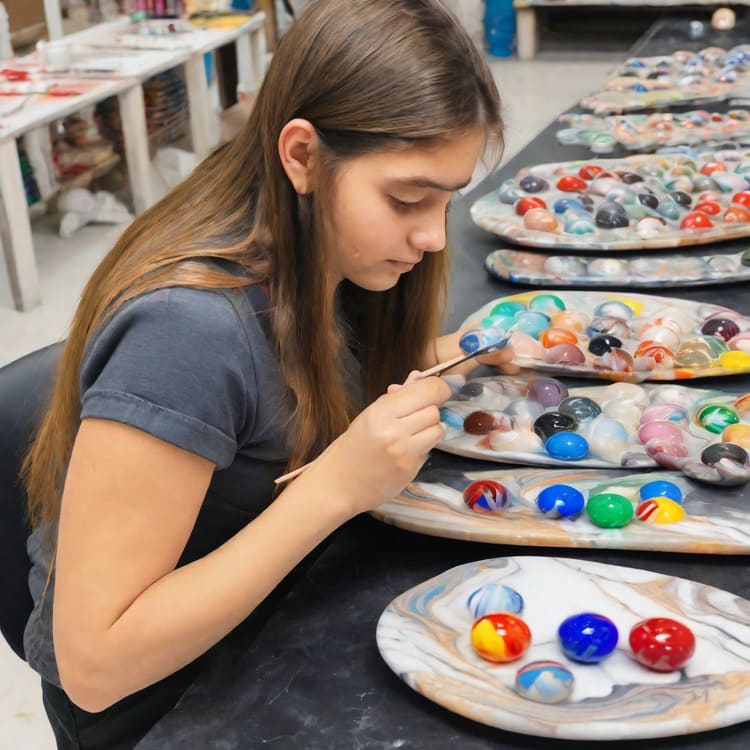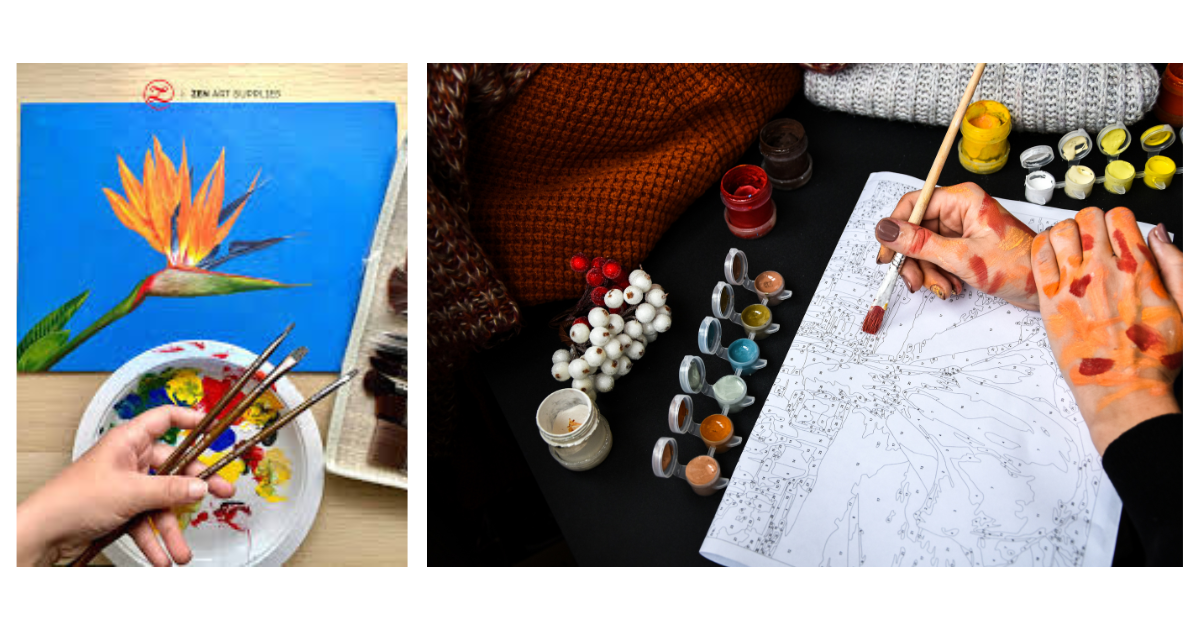Marble is a timeless and elegant material that adds a touch of luxury to any space. However, if you’re looking to update your marble surfaces without the heavy price tag or the need for a complete replacement, painting marble can be a viable option. .
In this blog, we will explore the possibilities of painting marble and provide you with a comprehensive guide to achieve stunning results.
Can You Paint Marble?
“The answer is yes, you can paint marble.“
Before starting the painting process, it is essential to gather the appropriate paint, paint strippers, and sealants since painting marble can be challenging.
However, when executed properly, the results can be breathtaking. By customizing the color to complement the existing design elements in your room, your freshly painted marble will seamlessly blend in and enhance the overall aesthetic.
There are two popular methods for painting marble:
- Using chalk paint and
- High-gloss paint. Let’s delve into each method and the steps involved.

Painting Marble with Chalk Paint
Chalk paint is an excellent choice for achieving a semi-gloss finish on your marble surfaces. It offers a matte appearance and requires less preparation compared to other types of paint.
Additionally, using epoxy coatings can provide durability and a glossy finish, giving your marble a brand-new look. Here’s a step-by-step guide to painting marble using chalk paint:
- Prepare the Workspace:
Ensure you are working in a well-ventilated area by opening doors and windows or using a fan. It’s crucial to wear a mask to protect yourself from dust and potential toxins. - Protect the Area:
Cover any surfaces you don’t want to paint with a cloth or painter’s tape, specifically focusing on the marble area you’ll be working on. - Surface Preparation:
If your marble surface has a shiny finish, lightly polish it using fine-grit sandpaper. However, if the marble is already rough or faded, sanding may not be necessary. - Cleaning:
Thoroughly dust off any debris from the marble surface and wipe it clean with a damp cloth. Allow it to dry completely before proceeding. - Applying Chalk Paint:
Using a damp brush or sponge, apply a small amount of chalk paint to the marble surface. Start with thin coats and allow each layer to dry thoroughly. Depending on the desired effect and coverage, you may need multiple coats of paint. - Curing Time:
Allow the paint to cure for at least 48 hours. Keep in mind that curing time may vary based on temperature and humidity levels.

Painting Marble with High-Gloss Paint
For a more polished and glossy finish, high-gloss paint is an ideal option. While the process is similar to using chalk paint, there are a few key differences. Here’s a summary of the steps involved:
- Prepare the Workspace and Protect the Area.
- Surface Preparation.
- Cleaning.
- Applying High-Gloss Paint:
- Use a high-quality brush or roller to apply thin and even coats of high-gloss paint.
- Allow each coat to dry completely before applying the next.
- Depending on the desired coverage, additional coats may be necessary.
- Curing Time:
- Similar to chalk paint, allow the high-gloss paint to cure for at least 48 hours, considering temperature and humidity levels.
SELECTING THE IDEAL PAINT FOR MARBLE SURFACES
To successfully paint marble, it is crucial to choose the appropriate type of paint. Regular house paint should be avoided as it can potentially damage or discolor the marble.
Instead, opt for specialized paints specifically formulated for stone and marble. Here are four excellent options to consider for achieving long-lasting and visually appealing results.
CHALK PAINT
Chalk paint has gained popularity for painting marble countertops due to its ease of application and ability to create a beautiful matte finish on the surface.
Compared to other paints, chalk paint requires less preparation work, making DIY projects more manageable and time-efficient. It is particularly suited for porous surfaces like marble and offers a low-odor and non-toxic solution.
ACRYLIC-BASED PAINT
For those who prefer a different look than the matte finish provided by chalk paint, acrylic-based paint is an excellent alternative. This water-based paint is affordable and suitable for individuals with allergies or asthma.
However, it’s important to note that the longevity of acrylic paint on marble may be shorter, especially when exposed to direct sunlight. Consequently, it may not be the best option for well-lit kitchens or areas with direct sunlight.
Nonetheless, acrylic-based paint offers a cost-effective approach to enhancing the appearance of your marble surfaces.
WATER-BASED PAINT
Water-based paint is an organic and gentle option for painting marble surfaces. Not only is water harmless to marble, but it also has the advantage of faster drying times compared to oil-based paints.
Most water-based paints contain organic binding agents, such as alkyd resin, acrylic polymer emulsion, and natural latex, which contribute to their robustness and durability.
This makes them ideal for high-traffic areas like hallways or entrances that are subject to frequent use. Additionally, water-based paints are easy to apply, maintain, and clean.
OIL-BASED PAINT
Oil-based paint is a popular choice for painting marble due to its exceptional coverage and thicker consistency, which minimizes the risk of drips. Furthermore, oil-based paint forms a thin but resilient coating that is less prone to cracking compared to other types of paint.
However, it is essential to exercise caution when working with oil-based paint due to its high flammability. Proper safety protocols should be followed, and it is advisable to have experience in painting before using oil-based paint.
Conclusion
Painting marble can be a fantastic way to refresh your space without the need for costly replacements. Whether you choose chalk paint or high-gloss paint, following the proper steps will ensure beautiful and durable results.
Remember to take your time, be patient during the curing process, and enjoy the transformation of your marble surfaces.









